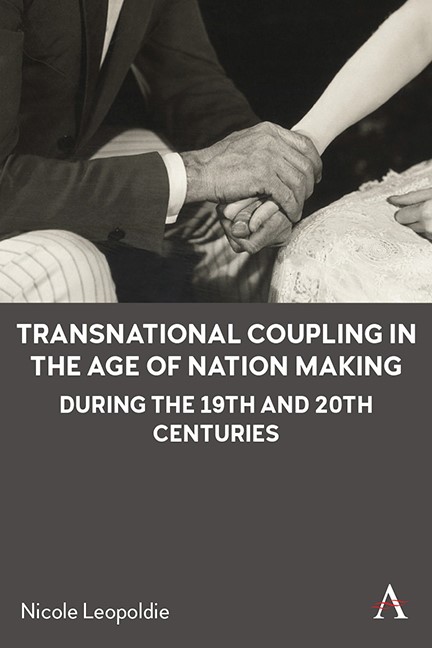Book contents
- Frontmatter
- Contents
- List of Figures
- Acknowledgements
- Introduction Marriage: National Borders and Personal Spaces
- Part I “Trading Titles for Treasure?”: Elite Marriages during the Nineteenth Century
- Part II “Paris is Free—and So Are Its Kisses”: Wartime Marriages during the Twentieth Century
- Conclusion
- Bibliography
- Index
Part I - “Trading Titles for Treasure?”: Elite Marriages during the Nineteenth Century
Published online by Cambridge University Press: 15 November 2023
- Frontmatter
- Contents
- List of Figures
- Acknowledgements
- Introduction Marriage: National Borders and Personal Spaces
- Part I “Trading Titles for Treasure?”: Elite Marriages during the Nineteenth Century
- Part II “Paris is Free—and So Are Its Kisses”: Wartime Marriages during the Twentieth Century
- Conclusion
- Bibliography
- Index
Summary
As long as the modern nation-states of France and the United States have existed, people have constructed families across their borders. For example, in 1782, Elizabeth Livingston of New York married the Comte de Mosloy, attaché to the French Minister. During the French Revolution, Edmond- Charles Genêt, French ambassador to the United States, married Cornelia Clinton, the daughter of New York Governor George Clinton (1794), and soon after, Betsy Patterson of Baltimore married Jérôme Bonaparte, brother of Emperor Napoleon I (1803). In the early nineteenth century, Maria Bingham of Philadelphia first married Jacques Alexandre, Comte de Tilly and later wed the Marquis de Blaizel (1826); whereas Prince Napoleon Lucien Charles Murat married Caroline Georgina Fraser of Charleston (1831). While these early marriages likely occurred by chance and in relatively small numbers, as the nineteenth century continued—a century marked by growing nationalism and heightened boundary-making—a noticeable pattern of transnational marriages began to emerge between wealthy American women and European aristocrats. According to contemporary American commentator Gustavus Meyers, by 1909, five hundred American heiresses had married titled nobility and had taken nearly $220 million out of the United States to Europe. While these women entered into matrimonial contracts with nobility from all over Europe, an overwhelming majority of these marriage contracts were established with men from Great Britain and France.
Even though these mixed marriages were not entirely exceptional, they remained (and in many ways continue to remain) exceptional in public discourse as contemporaries and historians struggled to explain their occurrence. For example, in January of 1887 the American newspaper Town Topics: Journal of Society published the following story:
Direct from the banks of the Seine: M. le Duc de Charenton is a nobleman of the type common in the palmy days of the Second Empire. Paris laughed at his eccentricities then, and Paris is laughing still […] This gay old dog of Napoleon’s court has been living for years “au troisième,” apparently dead broke, in a slum at Montmartre. He has been seen at odd intervals late at night on the Boulevards, evidently on the prowl: but he has always dodged old acquaintances and was generally written off by society as a bad debt.
- Type
- Chapter
- Information
- Publisher: Anthem PressPrint publication year: 2023

